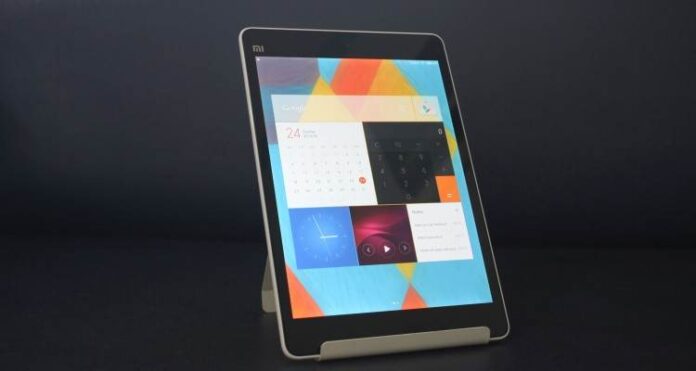With an affordable price comes a great tablet
Chinese tech company Xiaomi might not be a recognizable name as it wants to be but ask any techie and they’ll tell you that their smartphones offer great specs and quality at very affordable prices. With the launch of the Mi Pad, the Chinese company has entered the tablet market. Does the Mi Pad follow Xiaomi’s philosophy of great devices at affordable prices? Or does the tablet fall flat and becomes an expensive paperweight?
- The Mi Pad reminds me of Goldilocks and the Three Bears. The 4:3 aspect ratio and 7.9-inch display is just right. The 4:3 aspect ratio of the Mi Pad makes it easier for reading websites and e-books, especially when it comes to PDFs. I have done a fair amount of reading on the original Nexus 7 and, I have admit, one of its drawbacks is its size and aspect ratio that make it difficult to read PDFs. That isn’t the case with the Mi Pad. There’s enough surface area to make PDFs readable. Although those with eye problems will still have to do a lot of pinching and zooming.
- There is a downside to having a 4:3 display though. There are some apps that are not compatible with the Mi Pad, like Instagram. So, if you need to have the app either sideload it or stick to using your phone.
- While the Mi Pad comes in different colors, we’re only getting white. The back of the Mi Pad has a white glossy finish that is very reminiscent of the Apple iPhone 5c. This makes the Mi Pad a little cumbersome to handle as the tablet can easily slip from your hands.
- The Mi Pad is thin at 8.5mm. It’s just a millimeter thicker than Apple’s iPad mini 3. However, that doesn’t take away the fact that the Mi Pad is still comfortably thin.
- This tablet isn’t as heavy but holding the Mi Pad for a few hours and you’ll notice the strain on your hands and wrists. Plus, the slippery finish of the tablet doesn’t really give you the confidence that the tablet is secure in your hands. It’s a good idea to have a case not only to protect the Mi Pad but to get a good grip while using it.
- With a 6,700mAh battery, the Mi Pad will last you the whole day and more. With light use, such as looking and answering email, light gaming, web browsing, and even video watching, the Mi Pad lasted me a little more than a day and a half.
- You’ll be hard-pressed to see the individual pixels on the screen even if you look really close. Protecting that screen is Gorilla Glass 3, making it scratch-resistant while being able to withstand a fair amount of stress.
- I appreciate the placement of the speakers at the bottom of the tablet. I would have personally preferred having the speakers facing front. But the speakers are loud and aren’t obstructed when placed on a flat surface.
- Inside the Mi Pad is NVIDIA’s K1 system on chip, which has a quad-core processor running at 2.2GHz and NVIDIA’s Kepler GPU. Combined with 2GB of RAM, the Mi Pad is a powerful beast. It’s enough of a beast for it to be a powerful gaming tablet. I was able to play Hitman Go, Riptide GP2, and Hearthstone. All three games played without any slowdowns, even with the graphically-intensive Hearthstone.
- As powerful as the K1 SOC is on the Mi Pad, this particular SOC isn’t the same the one on Google’s own Nexus 9 by HTC. They have the same name but this K1 is only 32-bit, unlike the 64-bit dual-core CPU found on the K1 on the Nexus 9. It doesn’t affect the performance of the Mi Pad today, especially with its 2GB RAM. But it might find itself lacking in the long run when everything Android is running at 64-bit.
- The Mi Pad does get noticeably warm when doing heavy tasks and especially when gaming. However, it doesn’t get uncomfortably warm. Going back to some light tasks will quickly lower the temperature of the tablet.
- The Mi Pad has both rear- and front-facing cameras. While the rear-facing camera boasts an 8MP sensor, it just takes okay shots. Indoor photos expose a lot of grain in the photos, such as on the sample photos. The Mi Pad camera doesn’t have a built-in flash so don’t you even try taking night shots with the Mi Pad. However, in outdoor shots and well-lit areas, the most the camera of the Mi Pad will do is take decent, somewhat passable shots for social media sharing.

THE VERDICT:
The Xiaomi Mi Pad offers a lot in terms of build quality, power, and performance, as well as battery life especially for what you pay for. I love the hardware of the tablet but the MIUI is a love it or hate it proposition. For those that want to transition to Android from Apple, MIUI offers an easy learning curve. For those like me, let’s just say that it’s a good thing that Android allows for launcher and UI customizations. The real question is, would I spend my hard-earned money to pay for the Mi Pad? Yes. Even if you’re only getting a 32-bit SOC, you are still getting a lot for what you’re paid for.
PRICE: P10,990
SPECS:
Display: 7.9-inch IPS (1,536 x 2,048 resolution)
Operating system: MIUI based on Android 4.4 KitKat
Processor: NVIDIA Tegra K1 quad-core 2.2GHz
Memory: 2GB RAM
Storage: 16GB internal, expandable up to 128GB via microSD
Connectivity: Wi-Fi 802.11 a/b/g/n/ac, dual-band, Wi-Fi Direct, Bluetooth 4.0, USB OTG
Camera: 8-megapixel rear, 5-megapixel front
Battery: Non-removable Li-Po 6,700mAh
Dimensions & weight: 202 x 135.4 x 8.5mm, 360g
This article first appeared in the July 2015 issue of 2nd Opinion.













